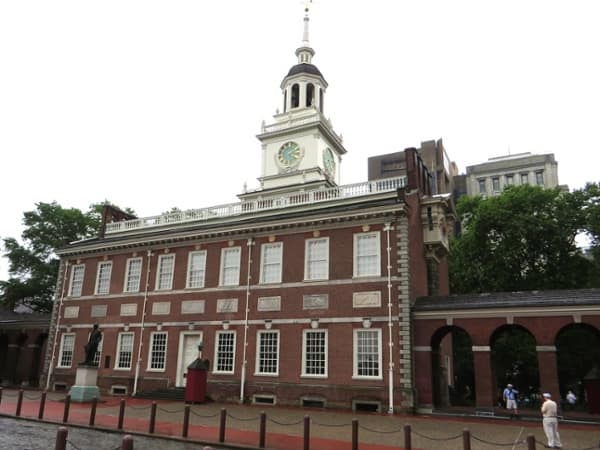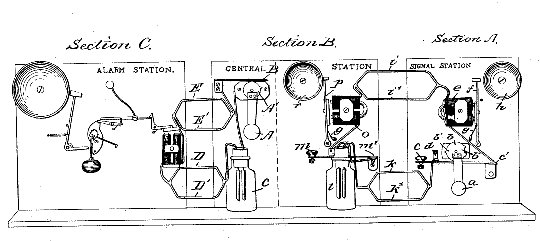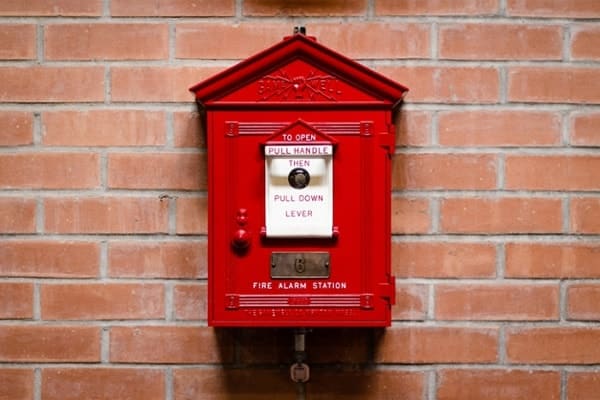
Have you ever stopped to wonder where–or how–fire alarm systems started? We’re here to walk you through the interesting history of fire alarms, from way back when to the alarms you know and love today.
It All Started with Community
With the creation of organized communities, risk management solutions had to be created to protect those communities. Fire alarm systems, at their most basic level, were created along with civilization and the pursuit of staying safe, alive, and well.
And the demand for fire alarm systems remains universally understood: Providing people with a clear warning of fire will always be imperative to protecting the livelihood of both life and infrastructure around the world.
From Then to Now: The Evolution of the Fire Alarm System
It was ancient Greeks and Romans who set the first fire system standards: the simple method of applying water to fire, quickly, to extinguish it! Specifically, they created a fire extinguisher and pump, a prototype to the fire protection systems we’re familiar with today.
Okay, maybe not exactly what we think of today – it’s probably be safe to assume modern fire alarms and systems are much more precise. Buckets were the equivalent to street-side fire hydrants – but hey – we’ve got to give credit where credit is due, right?
Obviously, technology has advanced greatly – but the premise and necessity remain the same: a system had to be created to specifically warn others of a fire and call to action those who could put it out. With this, more and more measures were put into place with the implementation of specific firefighting tools: firefighters, fire “trucks”, fire equipment, and fire stations.
Bell Towers: The First Fire Alarm System
By the 16th century, it was quickly understood within most civilizations that a water supply must be close by and quickly accessible in case of a fire. Eventually, larger communities and cities needed better ways warn others at greater distances. Here’s where bell towers came into play as the first true fire alarm system.
Traditionally, bell towers were meant as a public service–their purpose was to track time. Bells were also rung for church services and town gatherings, but the difference was the sound of the bells. You could say fire began to have a certain ring to it.

In America in 1828, the Pennsylvania State House rebuilt their Independence Hall with a new steeple, hung a new bell, and employed an official fire watchman. A man named Franklin Peale came up with specific bell-ringing signals: Ringing the bell at certain intervals alerted folks of the general location of the fire. Men would quickly head in that direction, water in tow.
This was quickly adopted in other big cities, too. Bell codes worked, to a degree, but the unpredictability of fire itself called for higher, more precise ways of locating and distinguishing fires before they reached a detrimental level of destruction. The fire alarm system, with its storied history, has come a long way since the bell tower.
The Official Invention of the Fire Alarm System Box
America in the mid-17th century was in an exciting era of life-changing (and saving) inventions. Following Samuel Morse’s invention of the telegraph in 1837 and its commercial usage starting in 1844, it was a scholar of electromagnetism, Mr. William F. Channing, of Boston, MA, who invented the first official fire alarm system.
Channing, and his assistant Mr. Moses Farmer both believed the use of telegraphy and electromagnetism could be used for different types of communication and location – specifically in emergency situations. The end goal was to create a quick, reliable fire alarm that could be used to alert firefighters to the near-exact location of a fire as it started.
It’s interesting to see how powerful innovations that benefit people around the world have evolved throughout history.
Originally, the fire alarm system was a bit confusing. It was a large, hefty contraption with several wires and levers, containing a telegraphic key with a metal handle. In 1852, when a fire was detected, someone would crank the handle, relaying the fire box alarm number to the nearest fire station location. Doing this also sounded the literal alarm, which would ring at the location.
Often, however, if the crank was turned too quickly, the telegraph signal couldn’t be sent out. The relationship between the electric current that would pulse out this fire alarm signal and the release of the bell-clappers (the alarm itself) was very touchy and had to be done precisely. As one may assume, in a state of emergency, your average Joe may be a little scared and not necessarily aware he should make sure to crank the handle correctly.

For a busy city, this invention was a monumental move toward the improvement of local and city-wide safety procedures, It was quickly patented. After refining their product, the patent for Channing and Farmer’s “Electromagnetic Fire Alarm Telegraph” was issued on May 19th, 1857.
Modern Fire Alarm Systems
In March of 1855, Channing set out his proposal describing the victories and merits of his invention at the Smithsonian Institution lecture in Boston, Massachusetts. He described his invention as “a higher system of municipal organization than any which has heretofore been proposed or adopted.” However efficient, his product just wasn’t catching on, and he was going into debt.
John Nelson Gamewell, a postmaster and telegraph operator from Camden, South Carolina, attended the same lecture Channing did and recognized the potential of the invention. He bought the rights to the fire alarm box Channing and Farmer created. Gamewell adapted the fire box to be more easily handled. It sold to over 500 cities. Instead of all the intricate levers and pulleys arranged on Channing’s product, the now universally-recognized “pull-down lever” was adapted.

Think of the fire alarm systems we have today – the small red box containing a handle beneath the glass that is to be pulled in case of a fire, often setting off sprinklers and sending out a signal to the fire station(s) to come and put out the fire. The original design wasn’t all that different, but there were too many things that could go wrong. Gamewell’s adaptations made all the difference and paved the way for the fire alarms we have today.
So, there you have it – the history of the fire alarm system from ancient times to modern day. It’s interesting to see how powerful innovations that benefit people around the world have evolved throughout history. Will there be additional fire alarm innovations beyond what we have in this modern age? As technology and the Internet of Things (IoT) continue to race on, we would set a friendly wager on changes down the line. I mean, we have moved from paper fire inspections to awesome fire inspection apps!

